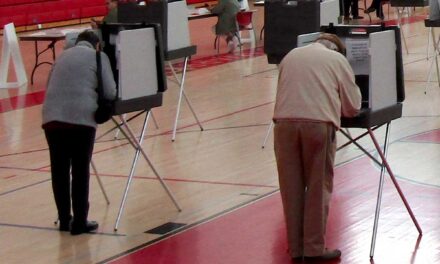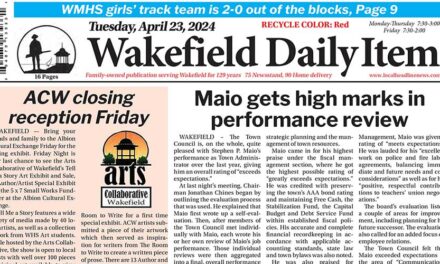By MARK SARDELLA
WAKEFIELD — An “average” Wakefield homeowner will see a $447 property tax increase for FY 2015, based on the average single-family home value of $416,000. Monday night the Board of Selectmen shifted the maximum allowable percentage of the town’s tax burden to the Commercial Industrial Property (CIP) class, thereby affording residential property owners the lowest possible tax rate.
The selectmen held their annual tax classification hearing Monday evening, meeting with Director of Assessments Victor Santaniello and Assessors Jane D’Addario and Christopher Wilcock. No other residents testified at the public hearing.
The selectmen’s decision means that the residential tax rate will be $13.48 per $1,000 of assessed value, which translates to an estimated FY 2015 tax bill of $5,608 for the owner of the average Wakefield home valued at $416,000. This translates to a $0.70 (5.4 percent) increase in the residential tax rate over last year’s residential rate of $12.78.
On the commercial/industrial side, the FY 2015 tax rate will be $27.22 per $1,000 of assessed value, an increase of $1.15 (4.4 percent). The result is an average CIP tax bill of $31,273. That is actually a $470 decrease from last year, because the average commercial value dropped from $1,216,700 in FY 2014 to $1,148,900 in FY 2015.
Santaniello noted that the Board of Selectmen had requested an excess levy capacity amount of $325,518 in order to mitigate some of the tax impact. Excess levy capacity is the amount under the limit that the town would be allowed to raise under Proposition 2½. Santaniello said that this decision by the selectmen not to levy the full amount allowed would result in a $0.07 savings on the residential tax rate and a $0.14 savings on the CIP rate. This translates into a $29 average savings for residential taxpayers and $161 for CIP classes of properties, Santaniello said.
FY 2015 is the first year of the full debt exclusion for the new Galvin Middle School, Santaniello observed. He noted that the debt exclusion adds $2,375,098 to the FY 2015 total tax levy.
It adds $0.51 to the residential tax rate or $212 to the average single family tax bill, Santaniello said, and it adds $1.04 to the CIP Rate or $1,195 to the average commercial tax bill.
In addition to setting the FY 2015 tax rate, the selectmen also voted against offering an “open space discount.” Santaniello advised that the town has never offered such a discount as no properties in town have ever been identified that meet the legal definition under applicable law.
The board also declined to offer a residential exemption, which has only been offered by a handful of communities in Massachusetts. Any relief realized by some taxpayers would result in an increase to other taxpayers, who would pick up the burden.
The selectmen also voted not to offer a “small commercial exemption.” Santaniello said that the Assessing Department was unaware of any businesses in town that met the requirements for this exemption.
Santaniello pointed out that in FY 2014 Wakefield had the lowest single family residential tax bill of all communities contiguous to Wakefield with the exception of Saugus, which has the Route 1 business district.




